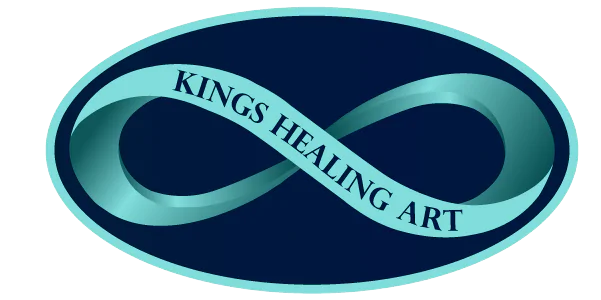The Role of Art in Healing has long been a powerful medium for self-expression, emotional release, and healing. Whether through painting, drawing, sculpture, or digital creation, engaging in healing through art has been proven to enhance mental well-being, reduce stress, and help individuals process complex emotions. Many therapists now incorporate art therapy benefits into their sessions, offering a creative outlet for patients experiencing anxiety, depression, or trauma.
In this article, we will explore the various therapeutic art techniques that promote emotional healing, the impact of visual arts and mental health, and how creativity strengthens the mind-body connection in art. By understanding the science behind painting as therapy, you can unlock the transformative power of artistic expression in your healing journey.
How Does Creating Art Promote Emotional Healing?
Creating art allows individuals to externalize their emotions in a non-verbal way, making it particularly beneficial for those who struggle with expressing their feelings through words. Engaging in emotional healing with art helps individuals process emotions such as grief, anger, and anxiety, creating a sense of relief and clarity. Studies have shown that artistic expression stimulates the brain’s reward system, releasing dopamine, the neurotransmitter associated with pleasure and motivation.
Additionally, participating in creative activities can foster self-discovery and self-acceptance. By painting, sketching, or sculpting, people can explore hidden aspects of their personality and develop a stronger sense of identity. For many, creative expression therapy becomes an essential tool for overcoming emotional blockages and embracing personal growth.
What Are the Psychological Benefits of Engaging in Visual Arts?
Engaging in the visual arts has been linked to numerous psychological benefits, including improved focus, reduced symptoms of depression, and enhanced cognitive function. Art therapy benefits those struggling with mental health issues by offering a safe and constructive way to channel their emotions. Creating art stimulates the brain’s neural pathways, leading to increased problem-solving skills and enhanced emotional resilience.
Research has shown that individuals who regularly engage in visual arts and mental health activities experience lower cortisol levels, the hormone responsible for stress. The meditative nature of art-making encourages mindfulness, helping individuals stay present and focused, reducing intrusive negative thoughts. Whether through painting, doodling, or crafting, art provides a fulfilling escape from daily stressors, improving overall mental well-being.

Can Art Therapy Help Reduce Stress and Anxiety?
Yes, art and stress relief go hand in hand. Many studies have demonstrated that engaging in artistic activities can significantly lower stress levels. Creating art has a calming effect on the nervous system, triggering relaxation responses similar to meditation. By focusing on brushstrokes, colors, and patterns, individuals shift their attention away from negative thoughts, reducing symptoms of anxiety and tension.
For those experiencing chronic stress or anxiety disorders, therapeutic art techniques such as painting, journaling, or mandala drawing can be highly effective. The repetitive and rhythmic nature of these activities promotes a sense of balance and inner peace. Additionally, painting as therapy allows individuals to express their worries visually, giving them a sense of control over their emotions and helping them find clarity in difficult situations.
What Are Some Effective Art Techniques for Self-Expression?
Many artistic techniques can be used for creative expression therapy, each offering unique benefits for self-exploration and emotional release. Abstract painting is a great way to let go of rigid thinking patterns and allow emotions to flow freely. Collage art enables individuals to assemble meaningful images, representing their thoughts, memories, or aspirations.
Doodling and sketching are excellent techniques for processing daily experiences, while sculpting and clay modeling provide a tactile and grounding way to engage with emotions. Engaging in art for trauma recovery often involves intuitive art-making, where individuals create without specific goals, allowing their subconscious to guide the process. These approaches help people reconnect with their inner selves, strengthening their emotional well-being.
How Does Art Influence the Brain and Nervous System?
Scientific research shows that engaging in artistic activities positively impacts brain function and the nervous system. Creating art stimulates the mind-body connection in art, activating both the logical and emotional parts of the brain. The right hemisphere, responsible for creativity and intuition, works in harmony with the left hemisphere, which governs reasoning and organization.
Neuroimaging studies suggest that art-making increases neural connectivity and enhances cognitive flexibility. Engaging in healing through art releases endorphins, the body’s natural painkillers, promoting relaxation and reducing stress. Furthermore, the repetitive motions involved in painting, drawing, and sculpting activate the parasympathetic nervous system, leading to decreased heart rate and improved emotional stability.
What Role Does Color Play in Art Therapy?
Colors have a profound effect on emotions, and art therapy benefits greatly from understanding color psychology. Warm colors such as red, orange, and yellow evoke feelings of energy and passion, while cool colors like blue and green promote calmness and serenity. Choosing colors consciously in therapeutic art techniques can help individuals regulate their emotions.
For example, people experiencing anxiety or stress may find relief in using soft blues and greens, while those battling depression might benefit from incorporating brighter hues into their artwork. Art therapists often guide individuals in selecting colors that align with their emotional needs, using color therapy as a tool for psychological healing.
How Can Beginners Use Art as a Therapeutic Tool?
For beginners, engaging in painting as therapy does not require formal training or artistic skills. The goal is not to create a masterpiece but to explore emotions freely and without judgment. A great way to start is through mindful doodling, where individuals allow their hands to move intuitively across the paper.
Journaling with visual elements, such as sketches or watercolors, can help process thoughts and emotions effectively. Engaging in creative expression therapy through coloring books, mandala designs, or freeform painting allows beginners to enjoy the benefits of art therapy without pressure. Over time, these activities become valuable tools for emotional regulation and self-discovery.
Are There Specific Art Forms That Are More Healing Than Others?
While all forms of artistic expression can be therapeutic, certain art forms have been recognized for their profound impact on emotional well-being. Painting and drawing are often used in art for trauma recovery, as they provide a safe outlet for expressing difficult emotions. Sculpting and pottery engage the hands and body, offering grounding effects that promote mindfulness.
Mandala art and Zentangle drawing are particularly effective in art and stress relief, as they encourage repetitive, meditative movements. Music and dance are also powerful forms of artistic healing, allowing individuals to channel emotions through movement and sound. The key is finding the medium that resonates most with an individual’s personal healing journey.
Can Art Help in Trauma Recovery and PTSD Healing?
Yes, art for trauma recovery is widely used in therapeutic settings for individuals recovering from PTSD. Art therapy provides a non-verbal means for trauma survivors to process and reframe painful memories. Creating visual representations of emotions allows individuals to express what might be too difficult to articulate in words.
Many trauma survivors use painting as therapy to externalize their pain, transforming their experiences into something tangible and manageable. By engaging in controlled artistic expression, individuals regain a sense of agency over their emotions, fostering resilience and recovery.
What Are Some Real-Life Examples of Art Transforming Lives?
Many individuals have found healing and purpose through healing through art. Veterans with PTSD have successfully used painting and sculpture to cope with their experiences, while survivors of abuse have found solace in expressive journaling. Public art programs have helped disadvantaged youth channel their struggles into creativity, fostering confidence and self-worth.
One famous example is the use of art therapy in hospitals, where patients undergoing medical treatments engage in creative expression therapy to reduce pain and anxiety. The transformative power of art continues to provide healing across cultures, proving that creativity is an essential tool for emotional and psychological well-being.


